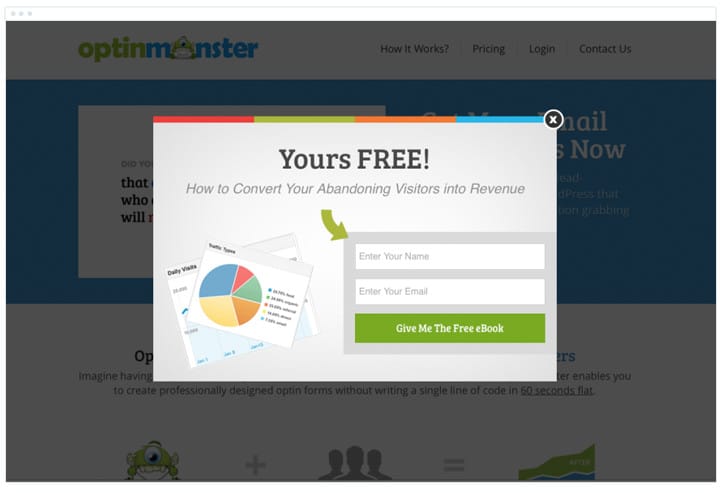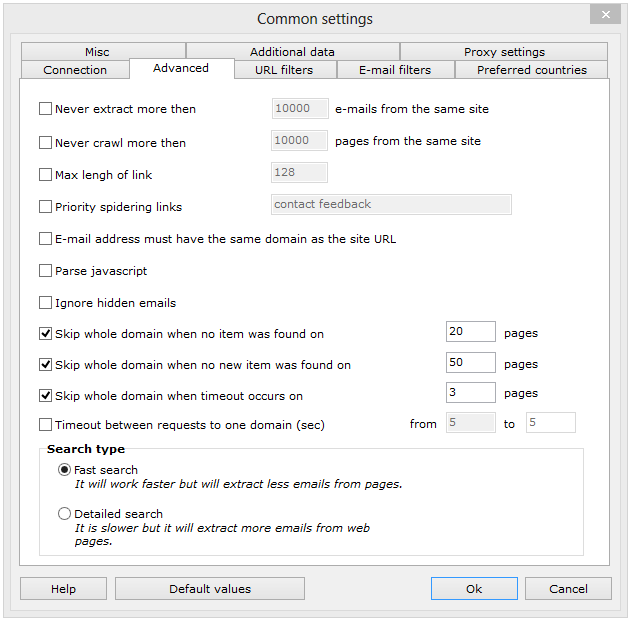Pro Info For Picking An Email List Site
Pro Info For Picking An Email List Site
Blog Article
What Should I Look Into Prior To Purchasing An Email List Of Hematologists?
To ensure that your hematologist's list is accurate, relevant and precise, as well as compliant with the law, you need be attentive to a few crucial aspects. Here are the main considerations:1. Data Accuracy & Quality
Source of Information Check that email list providers are dependable sources. For instance, you can confirm whether they are using professional directories (such as a medical database) or authentic opt-ins from doctors. The accuracy of the information collected will determine the quality and accuracy of the email list.
Verification and Updates: Contact the provider to inquire about the data verification process. Validate email addresses to remove invalid and inactive addresses. Since healthcare professionals are likely to move between positions and institutions, it is vital that the list is constantly updated.
Specialization and Segmentation – Be sure your list is targeted towards Hematologists. It can be segmented further, such as the subspecialty or location. The lists that are well-organized help you target your outreach more effectively.
2. Compliance with Legal Regulations
Data Privacy Laws – Ensure compliance with the laws governing data protection in force such as the General Data Protection Regulations (GDPR) for Europe and the California Consumer Privacy Acts (CCPA) for the U.S. and other applicable laws. The emails collected must have the consent of all the parties that are involved.
CANSPAM Act - In the U.S. you must ensure that your list conforms to the CANSPAM Act. This law governs email commercial communications. Infractions could result in fines and flagging of your emails as spam.
Opt-in Consent. The list of email recipients should consist of hematologists who have explicitly agreed to receive third-party email. The sending of unwelcome emails to individuals without their consent can have an adverse effect on engagement, and may even result in legal issues.
3. Provider Reputation
Find a reliable service. Reviews, testimonials, and case studies will help you decide whether the firm has a good reputation. A provider who has an established track record will be more likely to provide quality data that is in compliance with.
Transparency: Choose a service that is open about the source of data. Avoid providers that don't provide clear information about methods used to collect data.
Customer Support - It is crucial to select a service who offers excellent customer service. Support is crucial when you need help with technical queries, adjusting your checklist, or compliance issues.
4. Cost and Return on Investment (ROI).
Pricing Model: Be aware of the pricing method, whether it's pay-per-contact, flat-fee or subscription based. Be sure the price is aligned with the potential ROI, balancing list quality and quantity against your marketing budget.
Policy on Refunds or Replacements: A reputable service provider will offer refunds or replacements to customers with invalid or out-of-date email addresses. Clarify the terms of this policy before making an order.
Value for money: Compare the features of the list including options for segmentation and assurance of data accuracy, against the cost. The list with the lowest price may not always provide the greatest value if the data quality is not great.
5. Ownership of data and use
Understanding the difference between Single Use and Multiple Use Multiple Use: Be aware of the terms of usage for the email lists. Certain providers allow only the use of the list for a specific campaign, while other providers offer unlimited usage rights.
Exclusive vs. Shared lists: Determine whether the list belongs exclusively to your business or shared with other buyers. Exclusive lists usually lead to higher engagement because people are less likely to receive email marketing from other sources.
6. Data Integration and Format
Email list compatibility: The list must be compatible with email or CRM tools. The list should be accessible in common formats such as CSV or Excel to allow seamless integration.
The list should be easy to control and filter. Lists which are difficult to manage and segment could hinder the effectiveness of marketing campaigns.
7. Ethical Besorgnization
Relevance to Hematologists: Ensure that your outreach emails are appropriate to the field of hematology. Sending them content that doesn't coincide with their expertise may result in a lack of engagement and negatively affect the image of your business.
Avoid spam methods: Avoid bombarding recipients with too many emails. The sending of spam complaints could harm your reputation if you send out too many emails.
Conclusion
It is crucial to think carefully before buying a hematologist mailing list. For a reliable, accurate and efficient list, it is important to be aware of the quality of the data and the level of compliance with privacy laws. Prioritizing segmentation and legal compliance will increase your return on investment while ensuring that you have a positive image for your brand. View the recommended hematologists email list for website examples.
What Should I Consider Before Purchasing An Oncologist Email List?
When purchasing an oncologist's mailing list, it is important to consider a variety of factors to make sure that the list is top-quality, legal and tailored to your marketing objectives. Here are a few important factors to consider. Quality of data and accuracy
Source of Data: Ensure that the information comes from reliable and trustworthy sources like medical directories, professional associations or healthcare databases. Beware of lists from untrustworthy sources or ones that have not validated, since they may contain outdated information.
Verification Process: The list service should have a robust verification process in place to ensure the emails are valid legitimate, valid, and active. The list must be updated regularly and cleaned to get rid of duplicate, invalid or inaccurate contacts. This will increase deliverability.
Segmentation. A quality oncologist's email list must be segmented. Being able to filter the list by subspecialties (e.g., pediatric oncology, surgical oncology, hematology-oncology), geographic location, years of experience, or institution allows for more targeted outreach, increasing the likelihood of engagement.
2. Legal Regulations
Data Privacy Regulations – Ensure that your email lists comply completely with all relevant regulations. This includes the General Data Protection Regulations, or GDPR, in Europe; the California Consumer Privacy Act, or CCPA and the CCPA in the U.S.A. The email addresses must be collected and handled legally, while preserving consent and data privacy.
CANSPAM Act compliance If you're running a campaign in the United States, make sure that your list complies to the CANSPAM Act which governs all commercial emails. This means you must offer an opt-out option on emails, make use of an the correct subject line and be careful not to mislead recipients. Failure to comply could result in penalties or harm to your reputation.
Opt-In Consent - Ensure that the email addresses on the list were collected with the consent of the user. Oncologists are required to be able to consent to the sending of marketing messages. This will help ensure compliance with privacy laws and decrease the possibility of receiving spam complaints.
3. Provider Reputation
Reputable List Provider: It is essential to purchase your data from a list supplier with a solid track record in the industry. Examine their credibility by looking up their background and looking for reviews, testimonials and cases studies. Established providers are more likely to offer complete and legally-compliant lists.
Transparency. Providers need to be transparent about the source of their data, where it comes from, when they update it, and the method they use to verify. The lack of transparency could be a sign that data is not up to standards.
Customer Support: Select a provider that offers responsive support for customers in the event you need assistance with the list or have any questions regarding integration or segmentation, as well as compliance.
4. Cost and Return on Investment
Understand the structure of pricing, including whether it is based upon the number of contact or whether it is a one-time charge or subscription. Consider what the model of pricing is aligned with your marketing budget and the anticipated ROI.
Refund or replacement policy: A reputable service provider will provide either replacement or refund policies for inactive or obsolete emails. To ensure your purchase is protected, make sure you understand the conditions.
Value for money: Don't just focus on cost. The list that is less expensive may seem appealing however if it results in poor deliverability or low engagement, it could ultimately harm your campaign. Prioritize value by making sure the list contains relevant and complete data.
5. Ownership and use of data
It is important to know if the list is used only once, or whether you have the list and you can make use of it for as long as you want. Possessing a list could provide greater flexibility and value if you are planning multi-campaigns.
Exclusive vs. Shared Lists - Determine whether you are the sole buyer of the list, or the list is offered to other buyers. Exclusive lists are more valuable since they decrease the fatigue of your audience and boost engagement.
6. Data Format and Integration
CRM compatibility: Ensure that your list can easily be integrated into your Customer Relations Management (CRM) or email marketing tools. The list should come in a format that is easy to integrate, like CSV and Excel.
Easy Segmentation : The list must be easy to manage, segment and organize in your CRM. It will be simpler to customize your campaign by filtering quickly on criteria such as geographical location or subspecialties in oncology.
7. Ethical Considerations
Relevance of the message Oncologists, who are highly specialized professionals, have very busy schedules. Your message should be pertinent to their job or their interests. Examples include medical equipment, ongoing educational opportunities, as well as pharmaceutical advances. Unrelated emails could harm your brand and lead to low engagement.
Avoid Spam Don't send too many emails or unsolicited messages, which could cause complaints about spam. You should send out emails on a regular basis to reach out to your audience, but without burdening them too much.
Conclusion
If you are purchasing an email oncologist list, place a high priority on accuracy of data. The list must be properly segmented, validated, and tailored for your intended audience. Think about these elements to design an efficient and reliable outreach strategy. See the best oncologist email list for more examples.